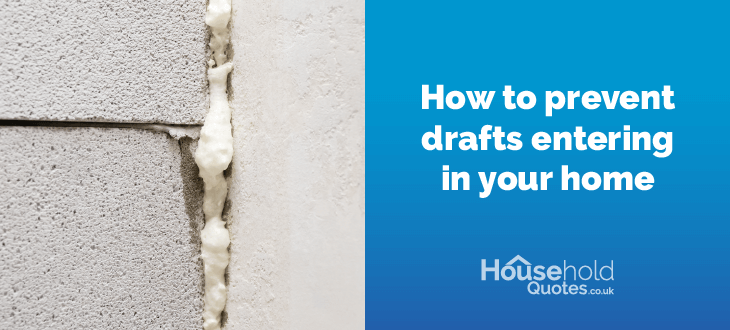- Householdquotes.co.uk
- Blog
- How to prevent drafts entering in your home
How to prevent drafts entering in your home


We are already halfway through November, which means winter isn’t far away. This will bring a significant amount of worry to many who can’t afford to heat their homes. The ongoing cost of living crisis, added to the fact some pensioners have had their heating allowance cut, will see millions struggle.
One way your home can gain cold and lose heat is through drafts. These come through cracks, holes and open areas of your property. Preventing drafts from entering will significantly aid in your home's heat retention.
To give you a helping hand, Joshua Houston, Property Expert at Household Quotes has revealed five tips to prevent drafts from getting into your home.
1: Focus on your loft
The loft is one of the most vulnerable areas of your home for unnoticed drafts. This is generally because people spend less time there. Give your loft a thorough inspection to ensure that it’s not letting in any drafts. Not only that, a loft is a common place where your home can lose heat. This is because heat generally rises, and as the loft is at the top of the property, it’s where it escapes. Fill in any gaps and ensure that it is properly insulated, loft insulation doesn’t have to be expensive as it can be picked up for well under £30 for 200mm.
2: Close your internal doors
Closing your outside doors might be an obvious tip, but it’s also important to keep your internal doors closed. This prevents the draft from travelling through your home, reducing the amount of heat lost.
3: Seal cat flaps
As much as your cat might love its freedom to come and leave as it pleases, door flaps can add a draft to your home. This is ok in the summer, but in the other seasons (especially winter) it can reduce the temperature of your home significantly. A suggestion to solve this problem is to regularly check the temperature outside, and lock the flap during those cold days and nights. Cats will let you know through other means that they require a venture outside, or want to come into the warm.
4: Look for cracks and gaps
A common reason for properties having drafts, and ultimately losing heat, is hidden cracks and gaps that you might be unaware of. Give your home a thorough inspection, and take a particularly close look at the bottom and top of your walls.
Cracks and gaps can be caused by pests, who use your home as a shelter for their nests. Ageing, weathering and general wear and tear can also cause sealant or surrounds on windows and doors to split. Fill in any gaps that you find with a gap filler, or block areas with weather stripping. However, if you find a larger area of damage you should consider a professional repair.
5: Seal fireplaces
Fireplaces and chimneys in older homes are a common cause of drafts. This can be from a chimney crack or faulty damper. Regularly check your fireplace and chimney to ensure that they are in good condition. If you feel extra chilly in your home and can’t find out why then it might be worth calling a professional to check.
Joshua Houston, Property Expert at Household Quotes:
‘’Drafts are an annoyance, they cause you to lose heat and gain cold. This results in a more expensive energy bill, as well as you worrying about your home's draft problem.
The tips above will give you an idea of where you should be looking if you notice a draft. They aren’t expensive to rectify either, some are as simple as closing your internal doors to prevent drafts from travelling further.’’

Josh Houston is a writer at Household Quotes whose passionate about the world of renewable energy, energy saving solutions and home improvements. He specialises in providing useful tips that our readers can adopt for their own needs. His skills involve translating complex topics to something more understandable.
